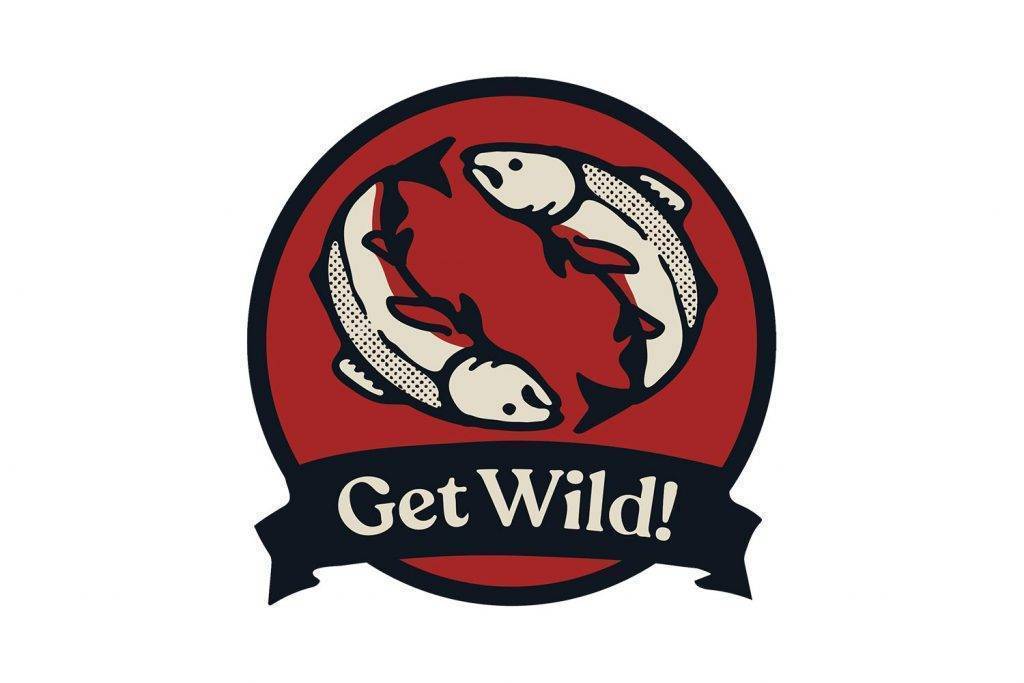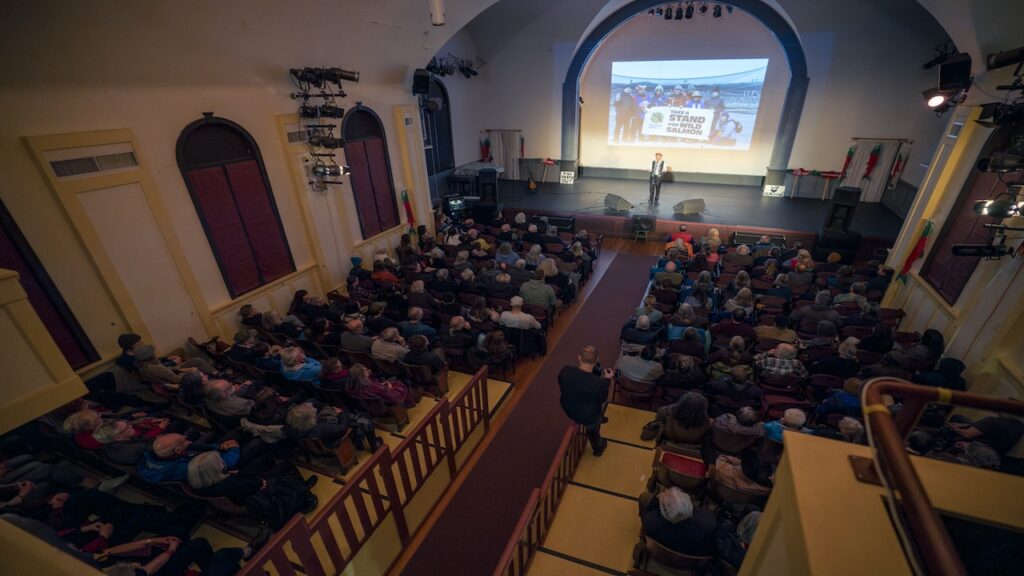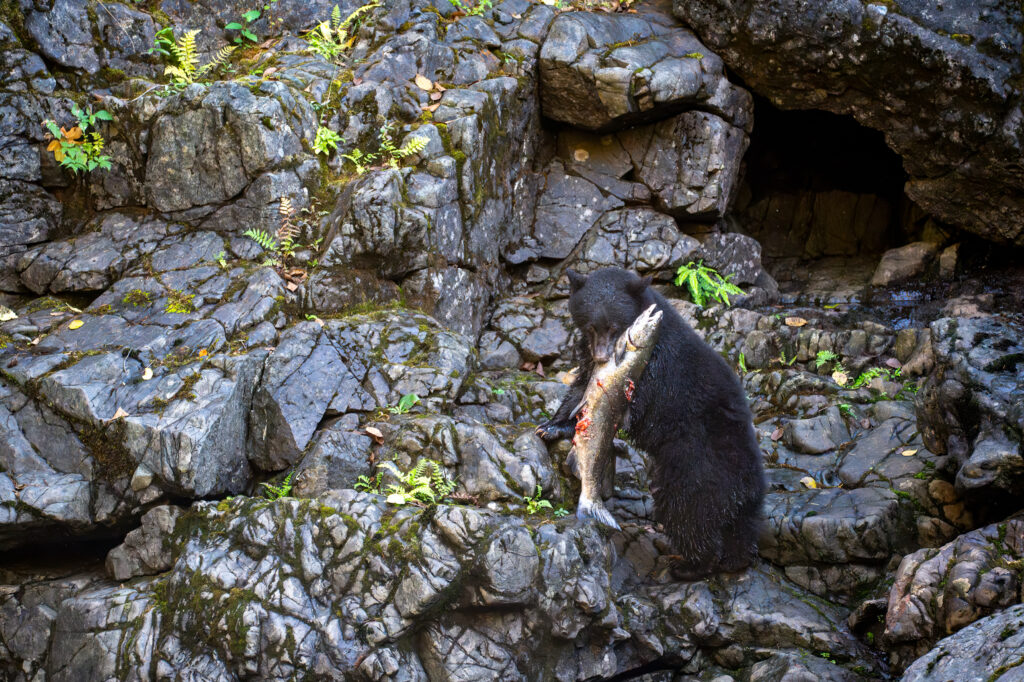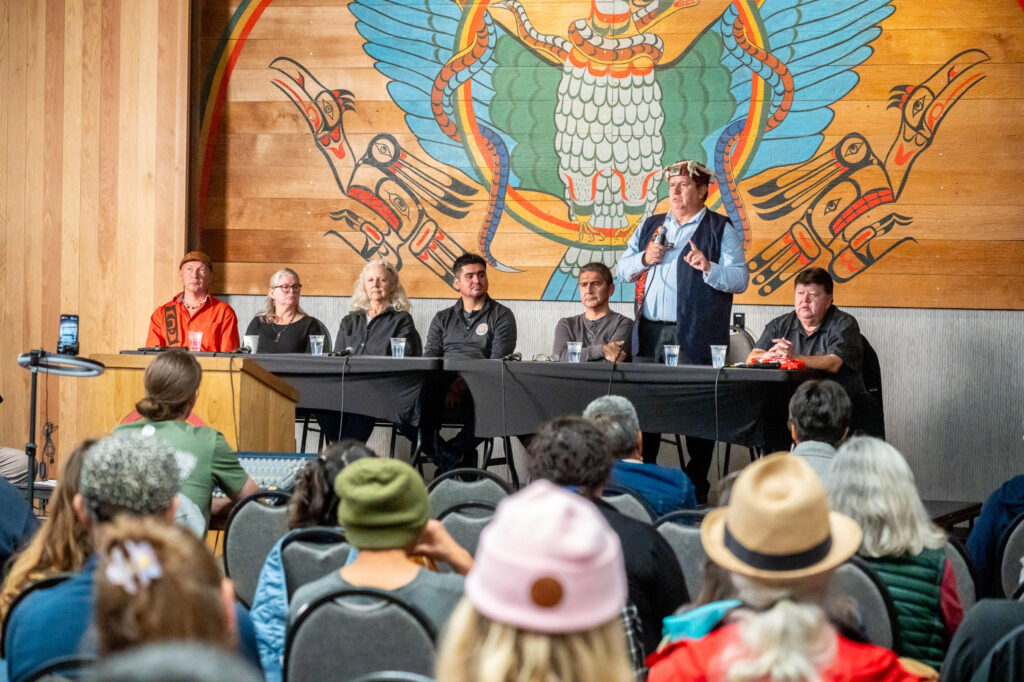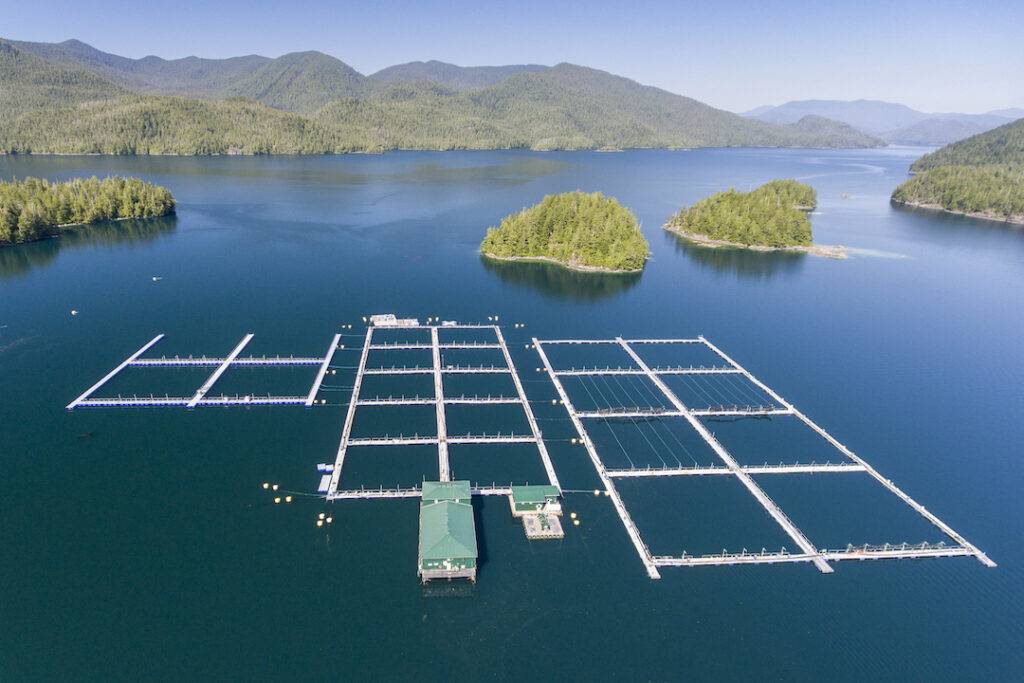In early March this year, herring spawned near Tofino. I was sitting at home looking out the window, when the water out front began to turn turquoise. While this used to be a common event, it is now rare. The herring had spawned near Clayoquot Island, and the rising tide was flushing spawn up the inlet. The waters were thick with sea lions, eagles hit the water with their talons, and gulls wheeled, screeching, over the whole spectacle. It was wonderful to witness the abundance of Nature, even though it was a shadow of its former self.
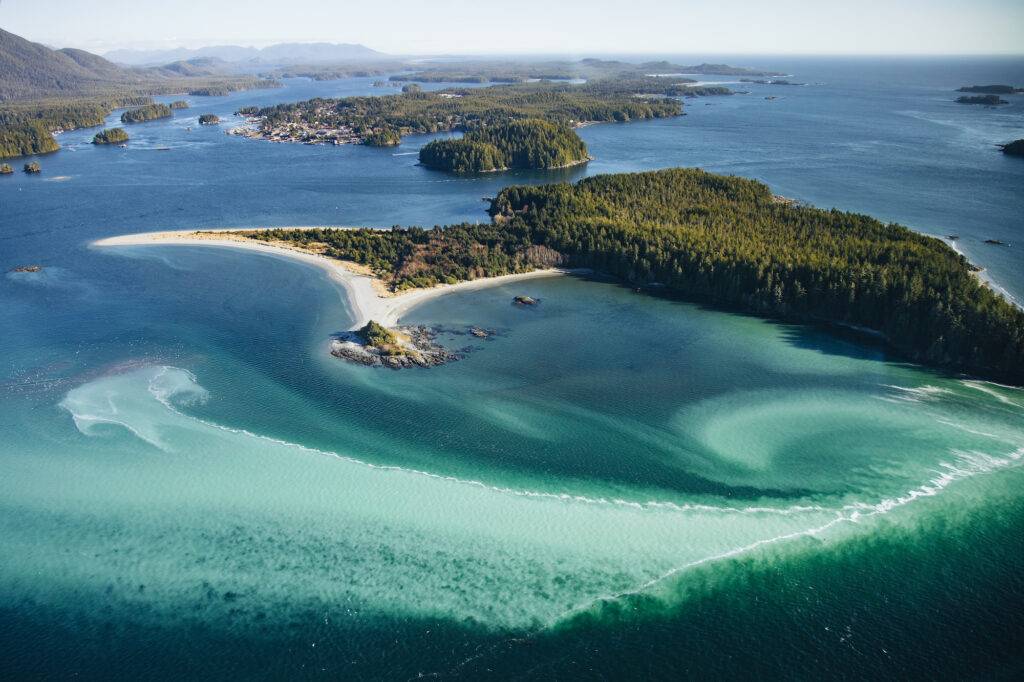
Herring are a foundation species of marine ecosystems. Sadly, formerly abundant populations have declined precipitously, due to overfishing and poor management by the Department of Fisheries (DFO). Meanwhile, up the inlets, literally tons of herring are trapped in factory fish farms. Young herring are small enough to swim right in. If they are not eaten by the farmed salmon, they can grow too large to swim back out, and become trapped. The full impact of this ‘incidental catch’ has not been documented by DFO.
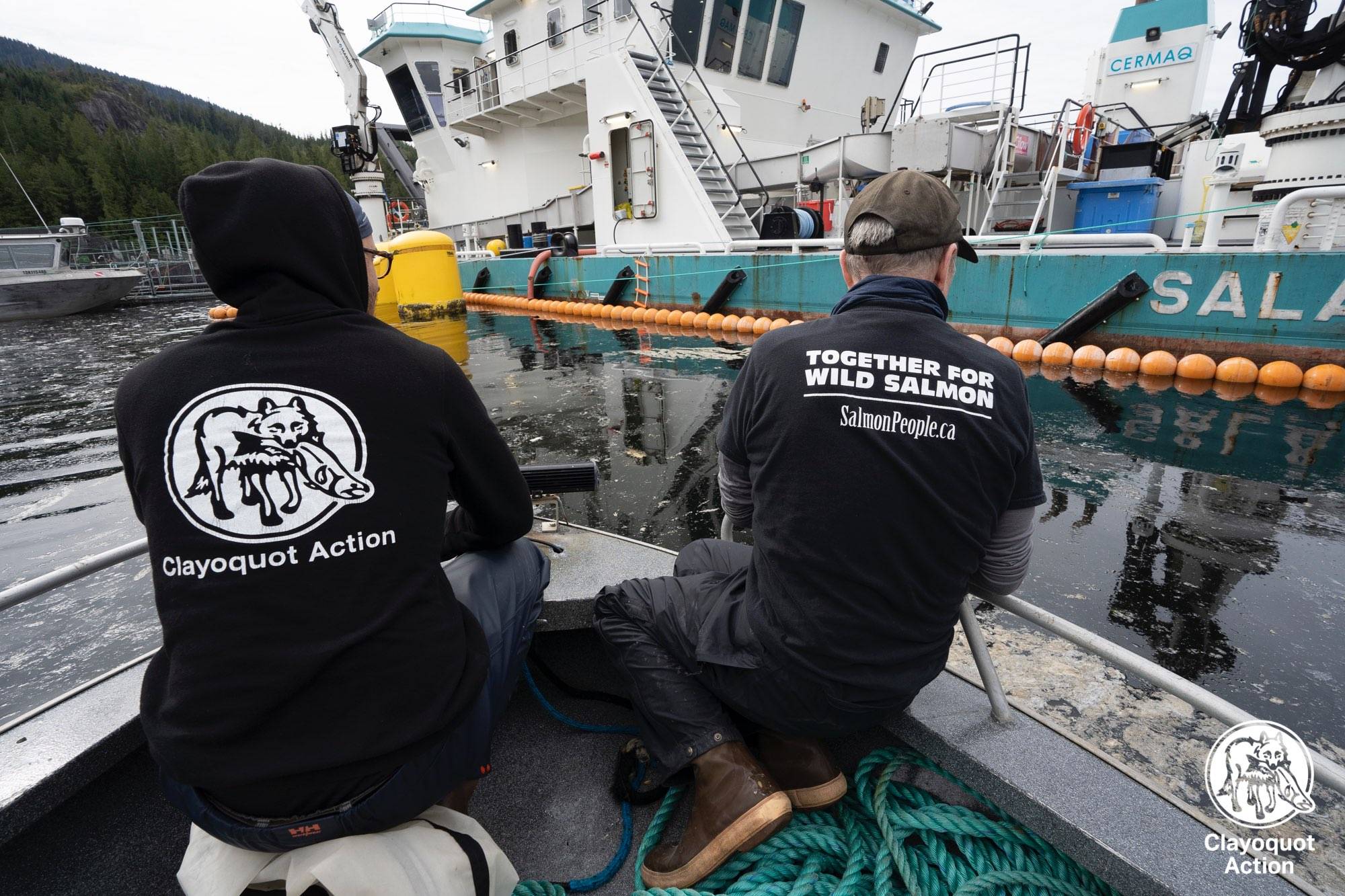
Fish farms are crime scenes?
The name of our salmon farm watchdog program—Clayoquot Salmon Investigation, or CSI for short—was supposed to be tongue-in-cheek. There are however, days when the fish farms literally are crime scenes. On two such occasions this spring, we were shocked to see dead and dying juvenile herring floating up around Cermaq’s Hydrolicer (the SALAR—named after Atlantic salmon). Their tiny little eyes were blown out—honestly, it was gruesome, and brought tears to my eyes. Witnessing salmon farming up close is brutal…

Cermaq is having major problems controlling sea lice on their farmed Atlantic salmon. They have resorted to using extreme methods including pesticide baths, as well as power-washing the lice off their fish. To do this, all the fish in a pen are sucked out, and run through their Hydrolicer. Although Cermaq has no licence to bring wild herring aboard any of their vessels, any herring in salmon farms are caught up in the suction and find themselves aboard the Hydrolicer.
Of course they are too small to survive the violent pressurized streams of water, and end up dead, floating beside the Hydrolicer. The second time we witnessed this, there was an extensive area of scum composed of scales, fat and dead herring.

No licence to fish for herring in fish farms
Cermaq has no licence to fish for herring, yet there is no penalty. So salmon farms harm not just wild salmon, but wild herring as well. These two iconic species are just the tip of the iceberg—much of the harm being caused by salmon farming is out-of-sight, out-of-mind.

It’s time to remove factory fish farms from coastal waters. Please add your voice to the growing chorus of First Nations, conservationists and fishers who are calling for salmon farms to come out of BC immediately, with a transition plan for workers so they are not the ones who pay the price for protecting the environment.
Dan Lewis is Executive Director of Clayoquot Action.
Photos and video: Jérémy Mathieu


